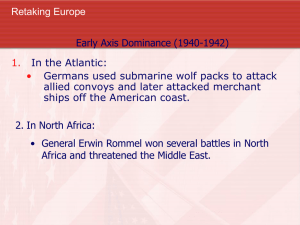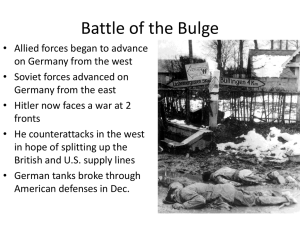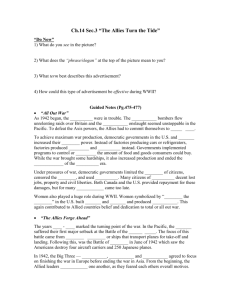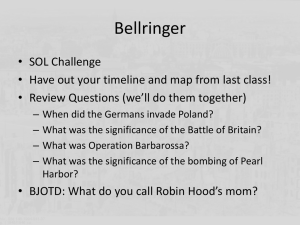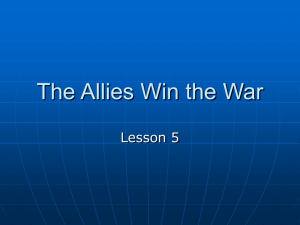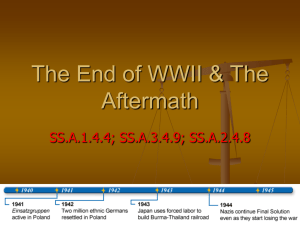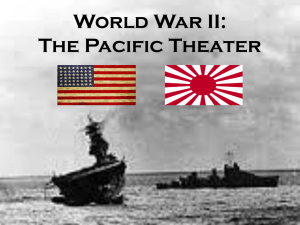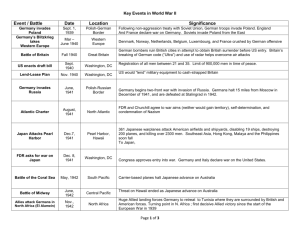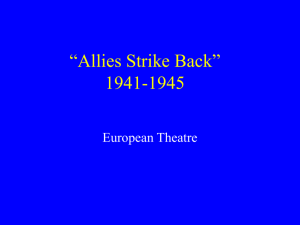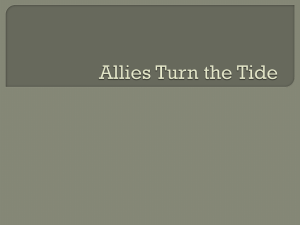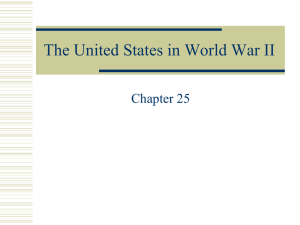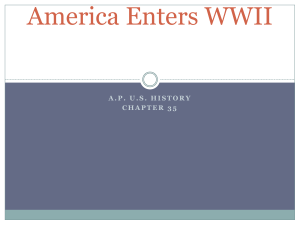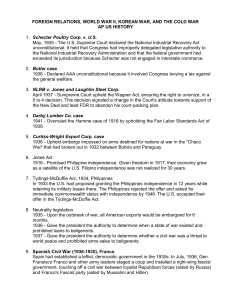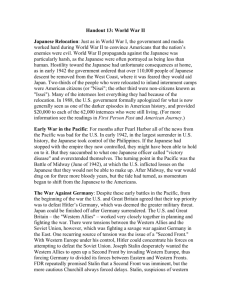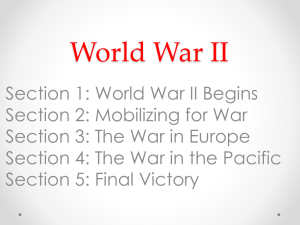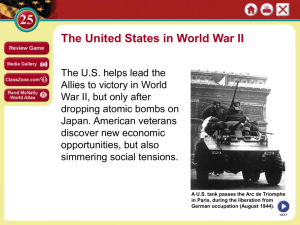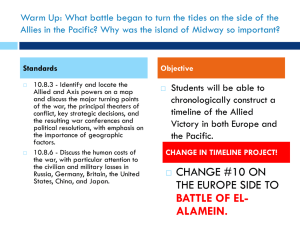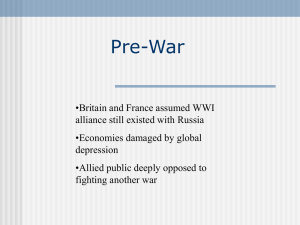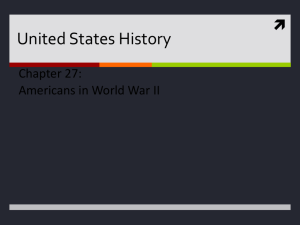The Allied Victory
advertisement
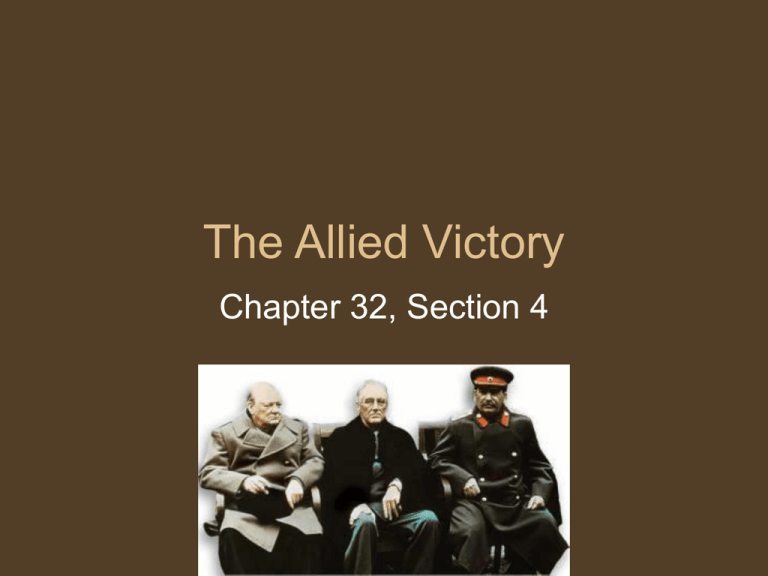
The Allied Victory Chapter 32, Section 4 Introduction • On December 22, 1941, just after Pearl Harbor, Winston Churchill and President Roosevelt met at the White House to develop a joint war policy. Stalin had asked his allies to relieve German pressure on his armies in the east. He wanted them to open a second front in the west. This would split the Germans’ strength by forcing them to fight major battles in two regions instead of one. Churchill agreed with Stalin’s strategy. The Allies would weaken Germany on two fronts before dealing a deathblow. At first, Roosevelt was torn, but ultimately he agreed. The Tide Turns on Two Fronts • Churchill wanted Britain and the United States to strike first at North Africa and southern Europe. The strategy angered Stalin. He wanted the Allies to open the second front in France. The Soviet Union, therefore, had to hold out on its own against the Germans. All Britain and the United States could offer in the way of help was supplies. Nevertheless, late in 1942, the Allies began to turn the tide of war both in the Mediterranean and on the Eastern Front. The North African Campaign • Rommel takes Tobruk, June 1942; pushes toward Egypt • British General Montgomery attacks at El Alamein, forces Rommel back • American forces land in Morocco, November 1942 • General Dwight D. Eisenhower—American commander in Morocco • In May 1943, Rommel’s forces defeated by Allies The Battle for Stalingrad • German army moves to capture Soviet oil fields • Battle of Stalingrad—Soviets, Germans battle for control of the city • German troops capture city, then surrender after a long battle. The Invasion of Italy • U.S. and British forces land on and capture Sicily in 1943. • Mussolini loses power, but Germans keep control of northern Italy • Allies invade Italy, but Germans keep fighting there until the war ends. The Allied Home Fronts • Wherever Allied forces fought, people on the home fronts rallied to support them. In wartorn countries like the Soviet Union and Great Britain, civilians endured extreme hardships. Many lost their lives. Except for a few of its territories, such as Hawaii, the United States did not suffer invasion or bombing. Nonetheless, Americans at home made a crucial contribution to the Allied war effort. Americans produced the weapons and equipment that would help win the war. Mobilizing for War • Fighting the war requires complete use of all national resources • 17 to 18 million U.S. workers—many of them women—make weapons • People at home face shortages of consumer goods • Propaganda aims to inspire civilians to aid war effort War Limits Civil Rights • Japanese Americans face prejudice and fear • Army puts Japanese Americans in internment camps in 1942 Victory in Europe • While the Allies were dealing with issues on the home front, they also were preparing to push toward victory in Europe. In 1943, the Allies began secretly building an invasion force in Great Britain. Their plan was to launch an attack on German held France across the English Channel. The D-Day Invasion • Allies plan invasion of France; use deception to confuse Germans • D-Day—June 6, 1944; day of “Operation Overlord” invasion of France • Allied forces capture Normandy beaches; liberate Paris by September The Battle of the Bulge • U.S. and British forces advance on Germany from west, Soviets from east • Battle of the Bulge—German counterattack in December 1944 • Germans gain early success but are forced to retreat Germany’s Unconditional Surrender • By 1945, Allied armies approach Germany from two sides • Soviets surround Berlin in April 1945 • Hitler commits suicide • President Roosevelt dies in April; Harry Truman becomes president. • On May 9, 1945, Germany officially surrenders, marking V-E Day Victory in the Pacific • Although the war in Europe was over, the Allies were still fighting the Japanese in the Pacific. With the Allied victory at Guadalcanal, however, the Japanese advances in the Pacific had been stopped. For the rest of the war, the Japanese retreated before the counterattack of the Allied powers. The Japanese in Retreat • Allies move to retake Philippines in late 1944 • Battle of Leyte Gulf leaves Japanese navy badly damaged • Kamikazes—Japanese pilots who fly suicide missions • March 1945: American forces capture Iwo Jima • June 1945: U.S. takes Okinawa. Japan suffers huge casualties The Japanese Surrender • Advisors warn Truman that invasion of Japan will cost many lives • He has alternative: the atomic bomb • Manhattan Project—a secret program to develop the atomic bomb • Hiroshima bombed August 6, 1945; about 75,000 die • Nagasaki bombed August 9, 1945: 70,000 die • Japan surrenders September 2, 1945
